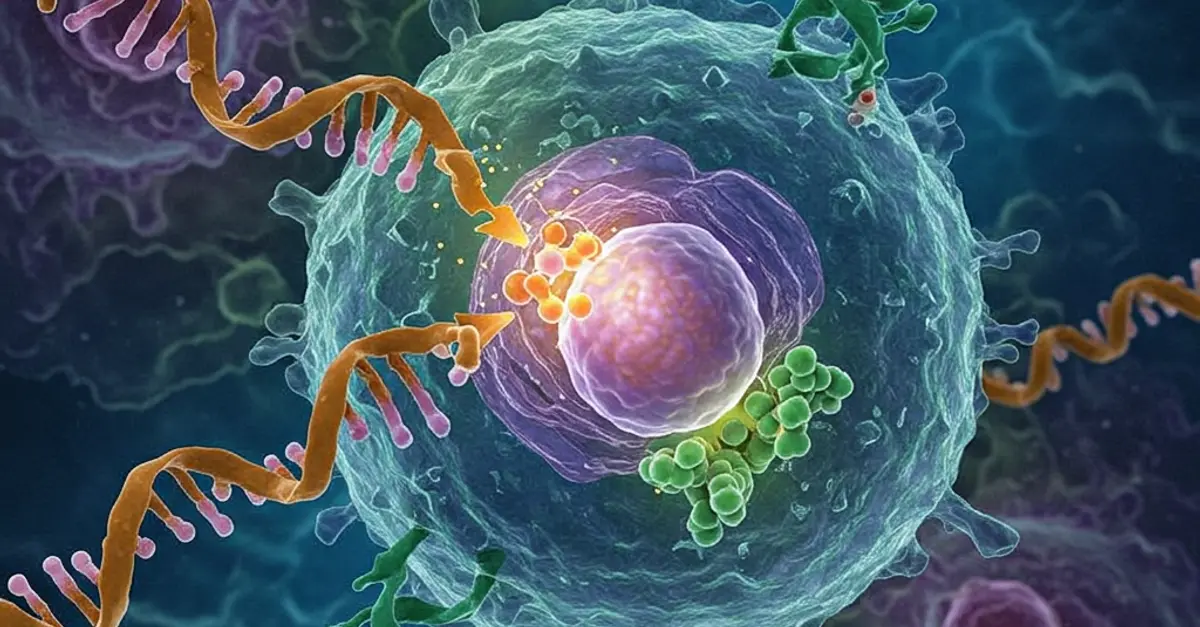
RNA therapeutics stand as a groundbreaking class of drugs with the potential to revolutionize how we treat and prevent human diseases. While early research faced hurdles, the discovery of RNA interference (RNAi) and CRISPR-Cas systems paved the way for remarkable progress. This culminated in the incredibly rapid development of mRNA vaccines for COVID-19, showcasing the immense promise of RNA-based therapies. RNA therapeutics can be classified broadly into the following strategies: RNAi-based therapies (siRNA therapeutics, miRNA therapeutics, Antisense oligonucleotide therapies), mRNA-based therapies (mRNA vaccines and mRNA as a protein replacement therapy, Prophylactic vaccines and Therapeutic vaccines) and CircRNA therapies.
In recent decades, the discovery of small noncoding RNAs and their role in gene regulation transformed the field of RNA biology. Small noncoding RNA, like siRNA (small interfering RNAs), and antisense oligonucleotides (ASOs) form complexes known as the RNA-induced silencing complex (RISC), which directs the degradation of a target messenger RNA (mRNA). ASOs and siRNAs are synthetically produced oligonucleotide drugs that bind to cellular RNA molecules, affecting mRNA processing or stability and ultimately reducing protein expression. The post-transcriptional gene silencing mechanism of RNAi makes it a powerful tool for controlling gene expression by inhibiting specific base sequences of a gene, revolutionizing drug discovery and development. Given the specificity and potency of RNAi, many RNAi-based strategies have been developed for therapeutic purposes, including siRNA and miRNA therapeutics, which have shown promising results in clinical trials as medical intervention drugs. By the end of 2024, six RNAi drugs have been approved and authorized by both the European Commission (EC) and the FDA, with many more in the clinical trials. In 2018 FDA approved the first siRNA drug to treat polyneuropathy caused by hereditary transthyretin (hATTR) amyloidosis in adult patients, marking a new era for RNAi therapy.
miRNA (micro RNA) like siRNA is a small duplex RNA molecule capable of targeting the mRNA through post-transcriptional gene silencing , however they both differ in biogenesis and mechanism of action. Unlike siRNA, miRNA binds to target mRNAs via partial complementary base pairing and inhibits mRNA translation instead of target mRNA cleavage. The emergence of miRNA therapeutics has not yet translated into approved drug candidates for medical intervention. To date, there are several miRNA molecules under clinical trials focused on rare genetic kidney disease, liver diseases and solid tumors. miRNA drug development faces hurdles like target identification, delivery, and degradation. Despite this, RNAi therapies, including miRNA therapeutics, hold immense promise. Advances in RNA chemistry, delivery, and mechanistic understanding offer solutions, paving the way for clinical translation and improved outcomes.
There is a growing field of RNA therapeutic delivery platforms that formulate unique chemical composition, formulation and targeting mechanisms. These platforms overcome key RNAi therapy challenges like delivery, immunogenicity, targeting, and scalability via optimized particle properties, targeting ligands, and biocompatible, biodegradable materials.
Unlike the previously described RNAs, messenger RNA (mRNA), a critical molecule of life, is a single-stranded RNA complementary to the antisense strand of DNA. Given the vital role of mRNA in protein production as the intermediator of the central dogma of molecular biology, several therapeutic strategies are developed for this new class of drug, including mRNA-based vaccines and mRNA replacement therapy. Significant progression in the field was made over the past decade to enable mRNA therapeutics as a promising modality for diseases, such as infectious diseases and cancer. The mRNA-based therapy approach presents itself with many advantages, such as the relatively low risk of insertion mutagenesis and no requirement of entering the nucleus for functionality. Additionally, the transient nature of mRNA provides benefits for more temporary expression of protein when needed. By introducing chemically modified mRNAs into the cytoplasm of cells, genetic diseases with reduced or suppressed levels of such protein may be expressed to resemble the natural protein (protein replacement). Furthermore, such mRNAs can also be used as a prophylactic vaccine, in which the mRNA can encode for specific foreign antigens to evoke protective immunity against infectious diseases; or to prime the immune system to stimulate cell-mediated responses to target tumors as a therapeutic vaccine.
Circular RNAs (circRNAs) are a class of ring structured non-coding RNAs with the absence of end motifs, such as the 5′ cap and 3′ poly(A) tails mainly endogenous to eukaryotic cells, but found to be highly conserved across numerous species. Due to the circular character of circRNAs, their stability can be superior to linear RNAs as they are resistant to degradation by various RNA exonucleases. Exogenous circRNAs have robust protein expression for longer durations compared to unmodified and modified linear RNAs. Therefore, circRNAs provide promising medical applications given their stability and needless modifications for expression in eukaryotic cells. Challenges remain for developing synthetic circRNAs as a therapeutic agent, such as controlling the expression level of circRNA to avoid sustained overexpression due to its high stability, large-scale manufacturing of highly purified artificial circRNAs, and targeted delivery of circRNAs. Nevertheless, understandings from linear RNA therapeutics, like mRNA based therapies, can be translatable to circRNA-based therapeutics and provide valuable insights for the development of circRNAs as a therapeutic agent.
RNA therapeutics represent a paradigm shift in medicine, offering targeted approaches to treat a wide range of diseases from infections to genetic disorders. With ongoing research and development, the full therapeutic potential of RNA is only beginning to be realized, promising a future of more effective and personalized treatments.
